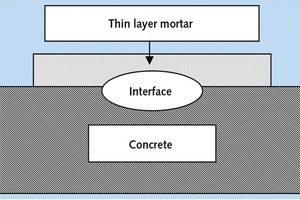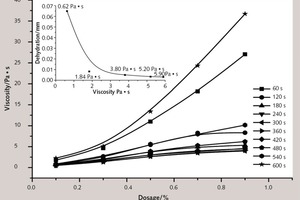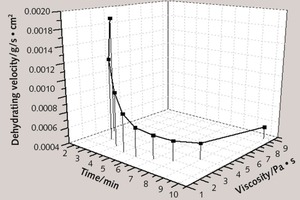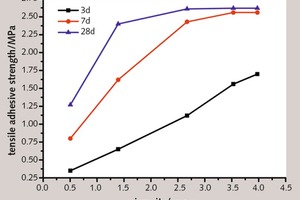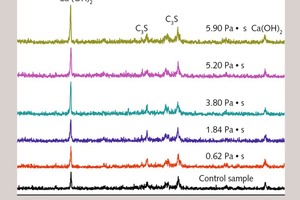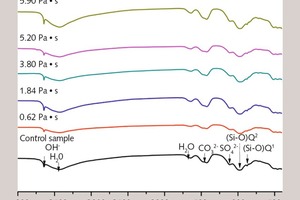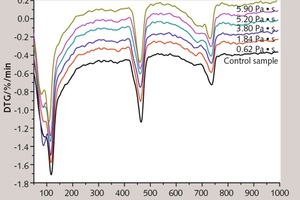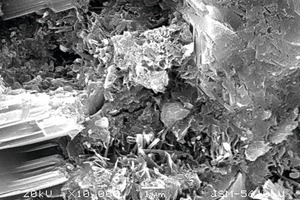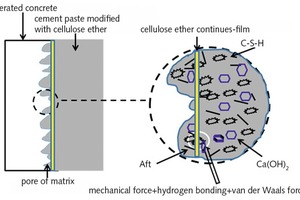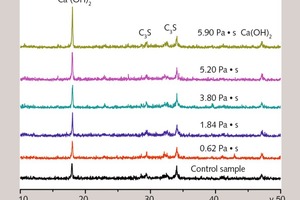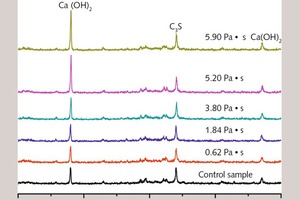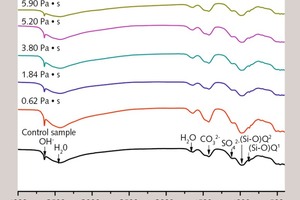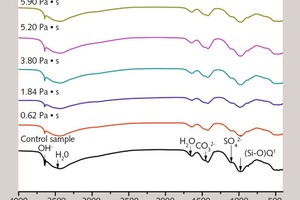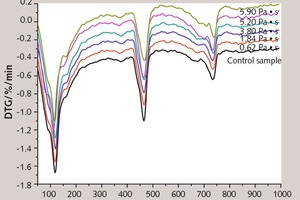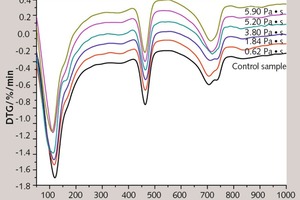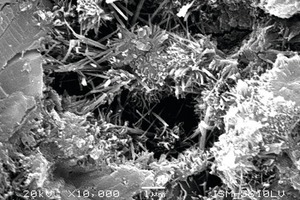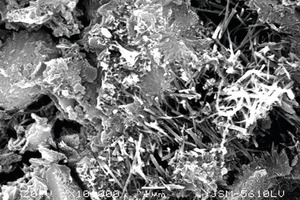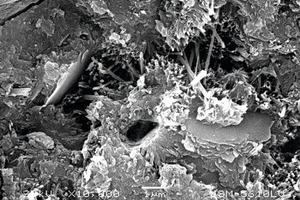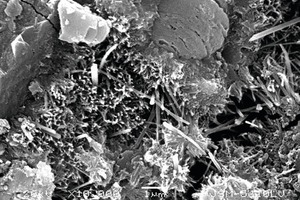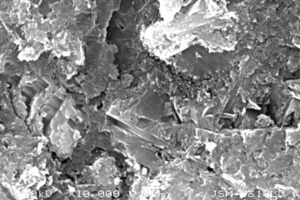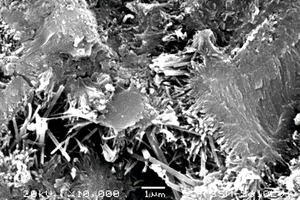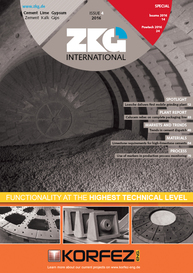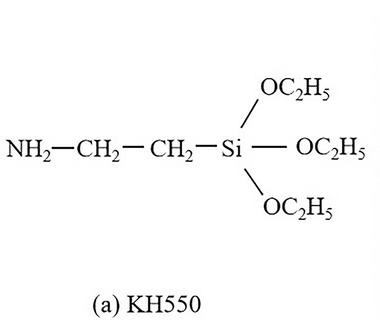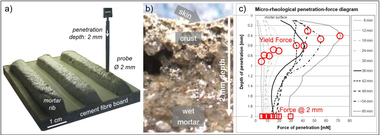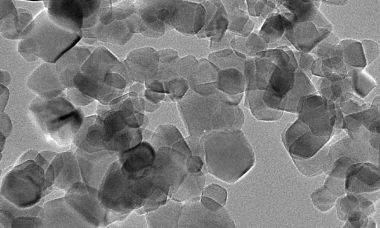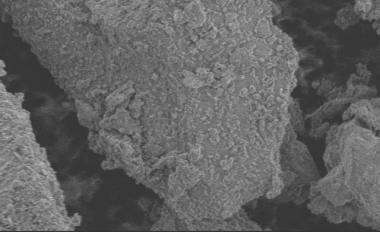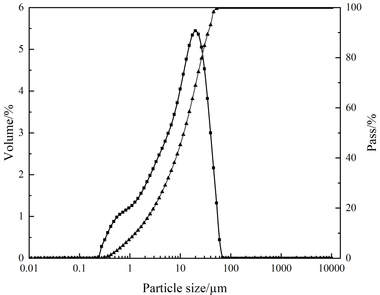Research on the interface and microstructure of thin layer mortar
Rapid water loss is one of the important characteristics of thin layer mortar. The testing methods, such as the velocity of water migration, the strength of interfacial bonding, XRD, SEM, FTIR and TG-DSC-DTG were used to research the interface and microstructure of thin layer mortar with continuous moisture migration from the thin layer mortar to aerated concrete. The results show that the rate and the amount of water migration on the interface from mortar to substrate dropped significantly with the increase of viscosity of mortar. There was also a good corresponding relation on the tensile bond strength of the interface and mortar viscosity, which means that the interface bonding strength increased with the increase of the viscosity of mortar.
1 Introduction
Thin layer mortar has been mostly considered as a special mortar, which possesses high water-cement ratio and high area/volume ratio [1].The common problem of the thin layer mortar system is that the a high proportion of water in thin layer mortar will be absorbed by the super absorbent matrix materials [2], then the thin mortar hardens rapidly in a short time due to the rapid loss of water, so the hydration degree is less, even less than 30 %; this has serious effect on the use and service life of construction.
Cellulose ethers (CE), with properties of water retention, thickening...

